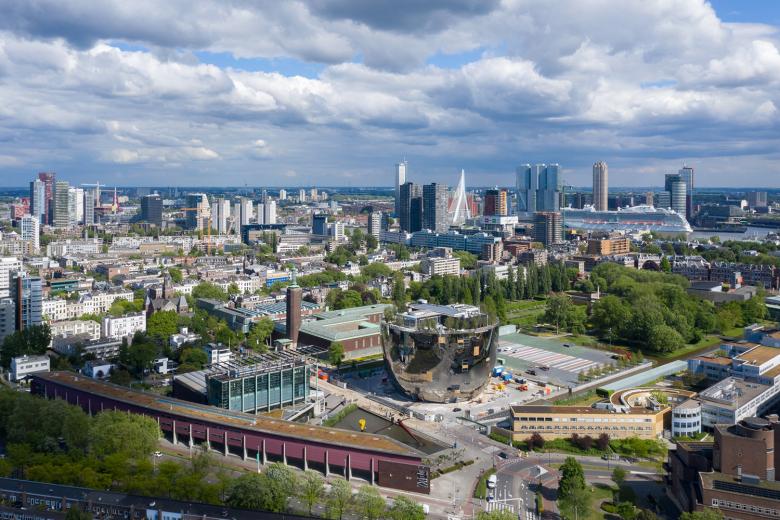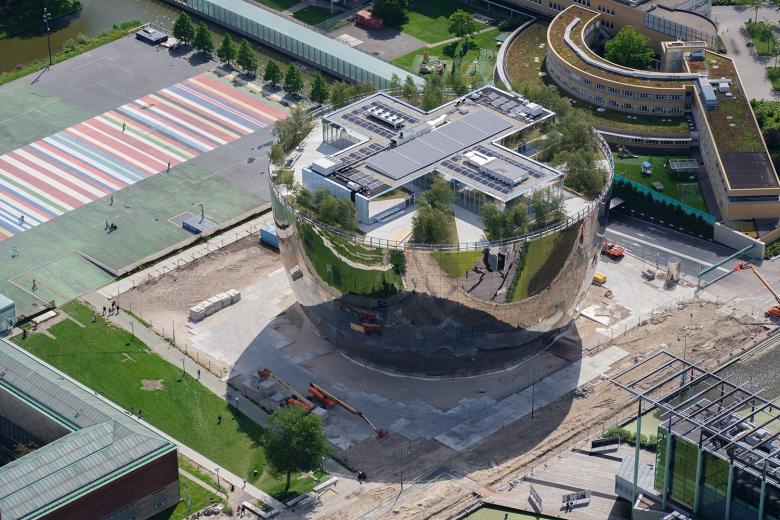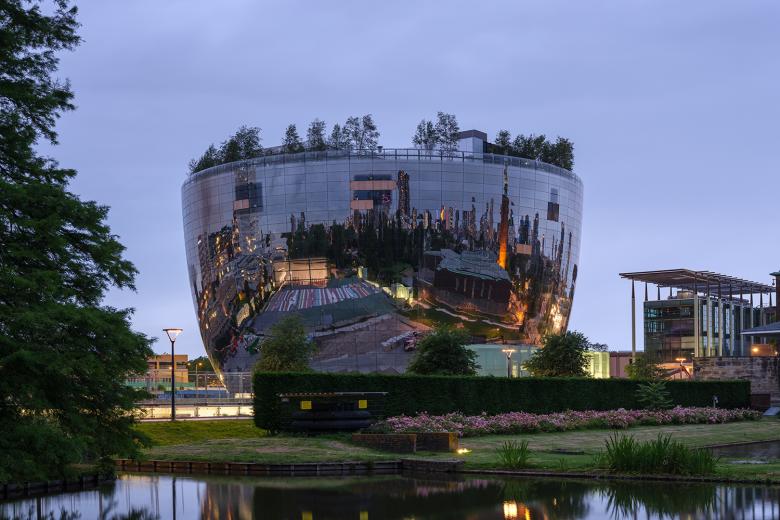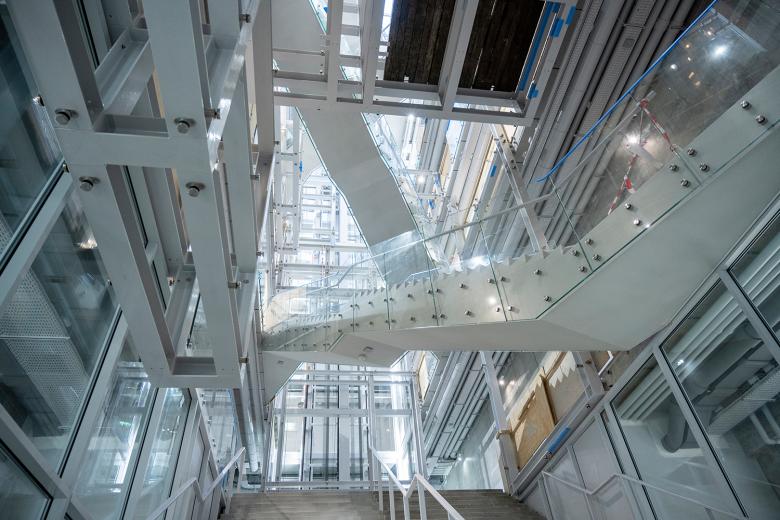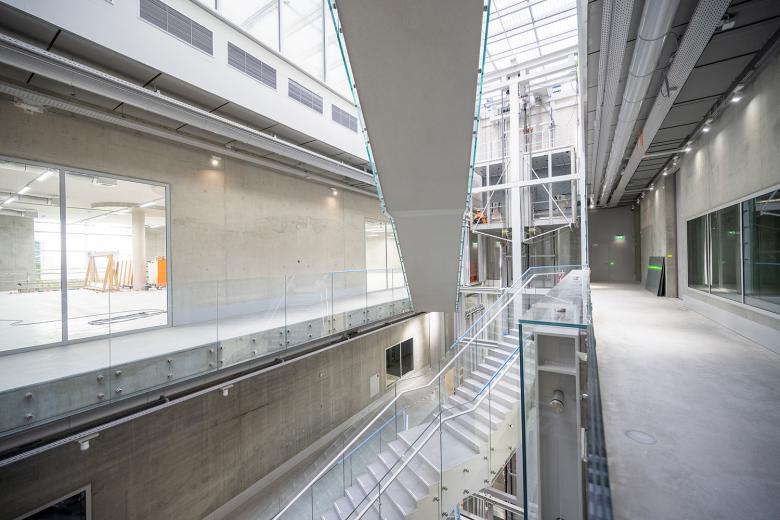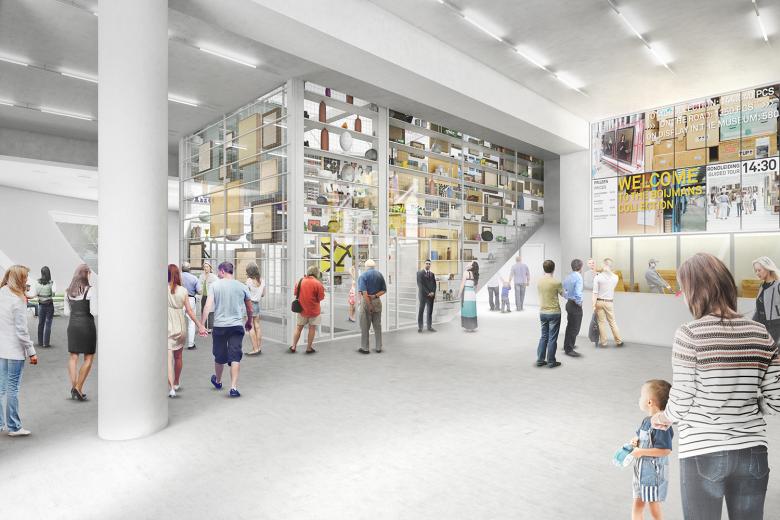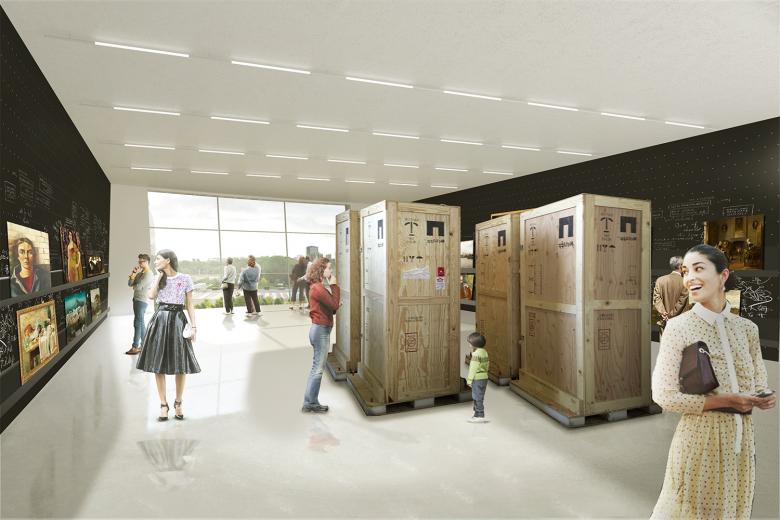Depot Boijmans Van Beuningen
Rotterdam, Netherlands
- Manufacturers
- JUNG
- Location
- Rotterdam, Netherlands
- Year
- 2021
- Team
- MVRDV Rotterdam
The Boijmans van Beuningen Museum, founded in Rotterdam in 1849, is named after Frans Jacob Otto Boijmans and Daniel George van Beuningen, whose private art collection has formed the foundation of the museum collection to this day. It was mainly works by old masters that came to the museum through donors, these include Van Eyck, Bruegel, Rubens, Hieronymus Bosch and Rembrandt. Works by Van Gogh, Kandinsky, Magritte, Dali, Andy Warhol, Joseph Beuys and Gerhard Richter came later. This has made the Boijmans van Beuningen into one of the most significant art museums in the Netherlands. And the collection continues to grow. Currently more than 150,000 objects are owned by the institution. Until now, as with other museums, a large proportion of these objects have been stored in the cellar – which has often led to problems caused by flooding from the nearby Nieuwe Maas river. This has now been overcome with the new exhibition warehouse planned by Winy Maas from the MVRDV architects’ office, where the art has moved up to the ground level.
Visitors can look behind the scenes of museum operation in the new premises, which has been built right next to the original museum building. They can watch any upcoming conservation and restoration work up close, and witness live how artworks are packed and transported – as items on loan, for example. In the process they are surrounded by art on all sides, as the works are stored as efficiently as possible, just like in an enclosed depot. They are packed against the wall, hung on shelves or displayed in glass cabinets. The five levels of the building are connected to each other by a large atrium. A zigzag-shaped staircase, that reminds us of the famous Carceri etchings by Piranesi, takes visitors up to the green-landscaped roof terrace at a height of 35 metres above the ground. It offers visitors a breathtaking view of the city of Rotterdam.
The building itself has its own, unconventional geometry that reminds us of a giant pot which, ultimately, is a wonderful echo of the official “Depot Boijmans van Beuningen” name of the building, as the Dutch for “the pot” translates as “de pot”. The bowl-shaped form of the building – with a 40-metre diameter on the ground floor and a 60-metre diameter on the top floor – was almost inevitable. On one hand, the architects wanted to keep the footprint of the building as small as possible, on the other hand, it shouldn’t be any higher than the tower of the neighbouring museum. An additional special construction feature is the façade made from 1,664 mirror-glass panels. They provide a puzzle-like reflection of its surroundings to integrate the building into its context. This impressive effect may also ultimately be the reason for the popularity of the building – as the new museum depot is simply unbeatable as a background for photos and selfies. So, even before its opening, the depot had become a new landmark and magnet for visitors. JUNG has also had a share in its success. The company is well represented with switches and sockets from the JUNG LS 990 design range in the visitor areas. In the warehouse space, workshops and logistic areas, the functional and unfussy surface-mounted WG 800 range has been deployed.
The official inauguration of the building is planned for autumn 2021.
Related Projects
Magazine
-
Reusing the Olympic Roof
2 days ago
-
The Boulevards of Los Angeles
3 days ago
-
Vessel to Reopen with Safety Netting
3 days ago
-
Swimming Sustainably
3 days ago

